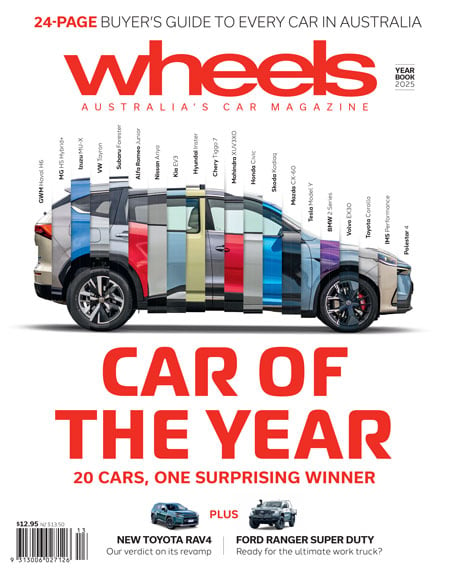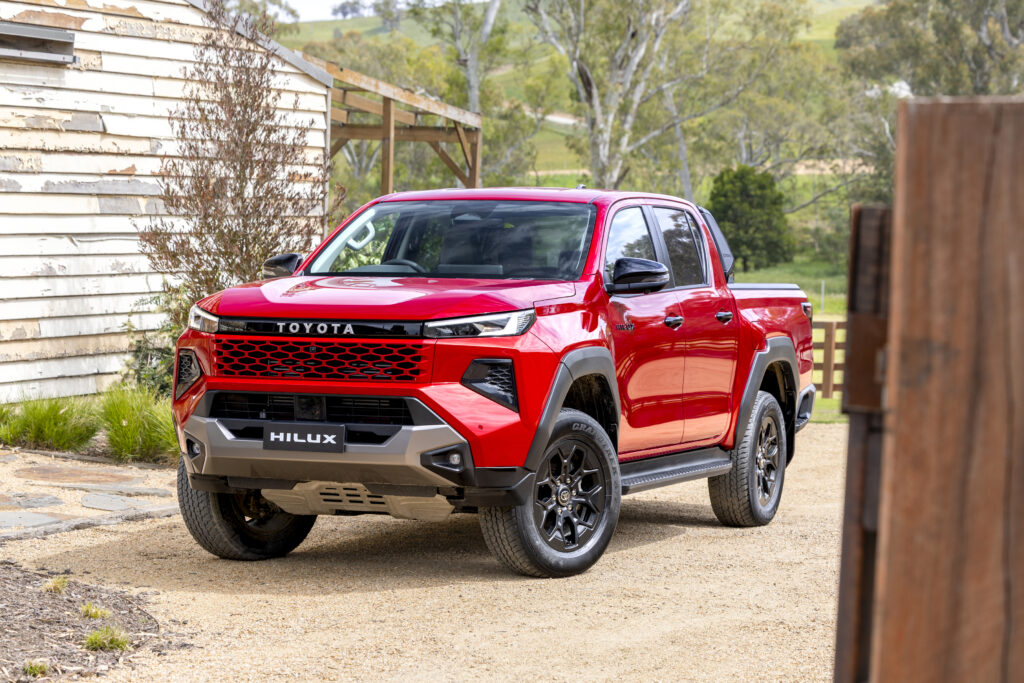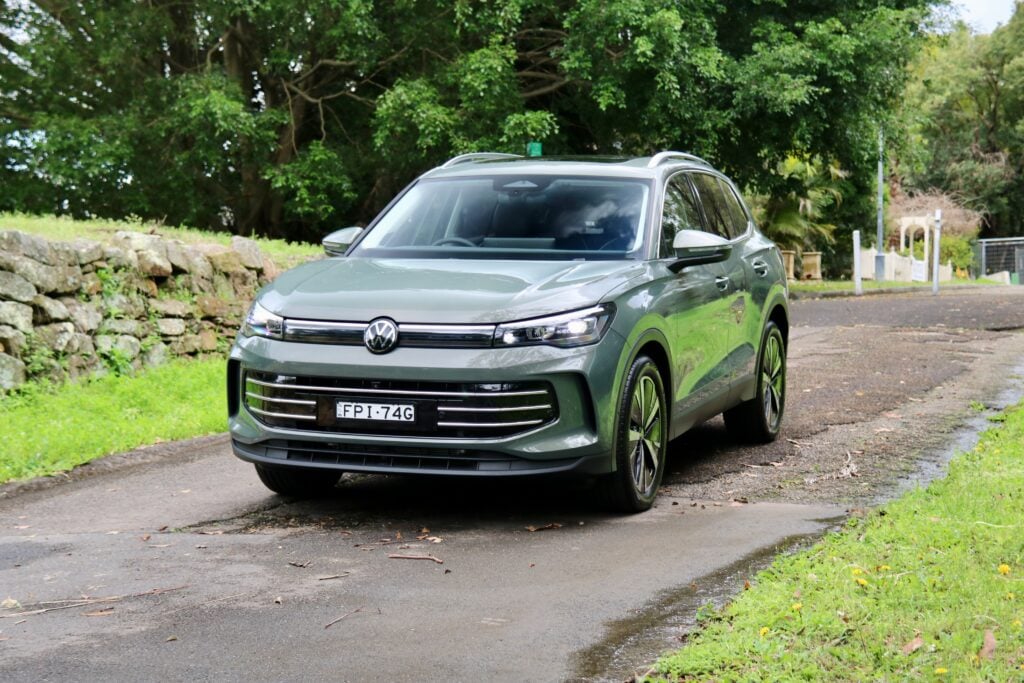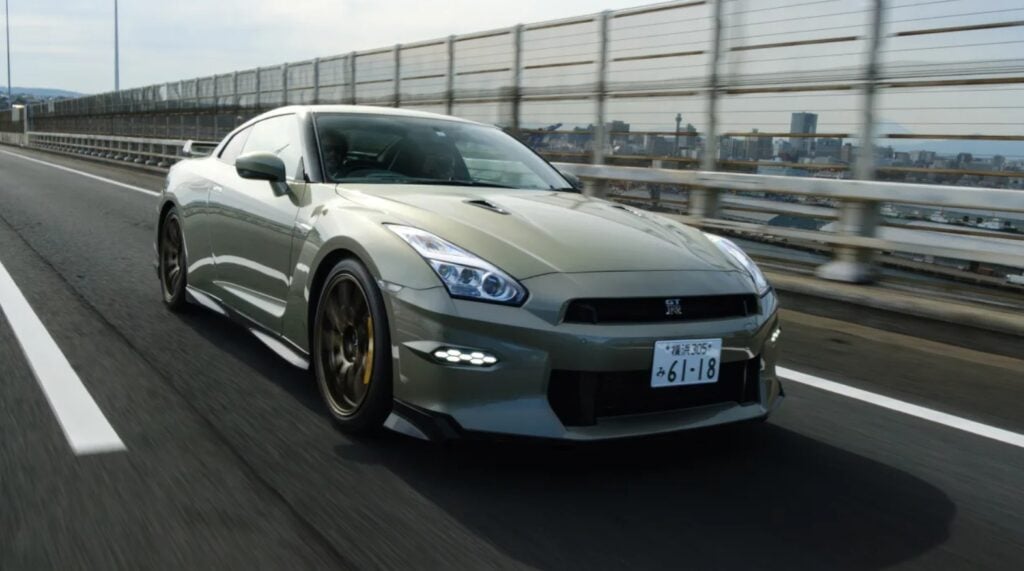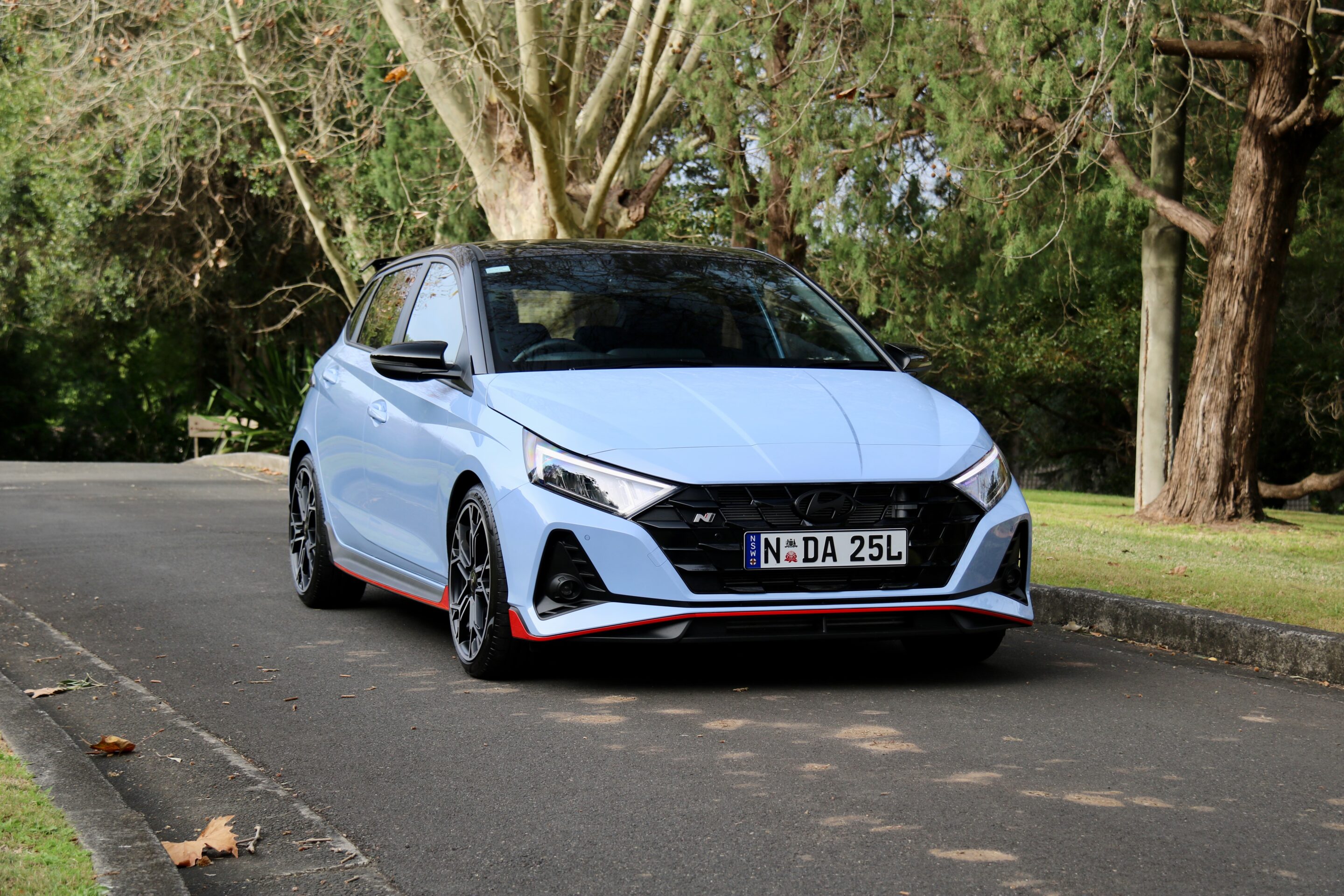
Things we like
- A bargain hot hatch
- Strong performance, excellent chassis
- Surprisingly practical
Not so much
- Costs more than it used to
- Firm ride noticeable on rubbish roads
- Iffy clutch action
| Rating |
|---|
Australians are suckers for performance cars, a fact quite evident in what we drive. Many brands such as BMW M, Mercedes-AMG and Volkswagen’s R maintain a strong presence here off the back of their performance credentials.
Hyundai’s N division also enjoys strong success in Australia, with enthusiasts – sorry, that’s ‘Nthusiasts’ in Hyundai jargon – loving its go-fast products, so much so that a lot of its models are now produced solely for the Australian market.
The i20 N hot hatch is one of them, which left European markets in 2024 thanks to the region’s ever-tightening emissions laws. But Europe’s loss is Australia’s gain, because we are one of two markets globally that continues to receive the i20 N. We aren’t sure how long that will continue, so should you be snapping up an i20 N before it’s too late?
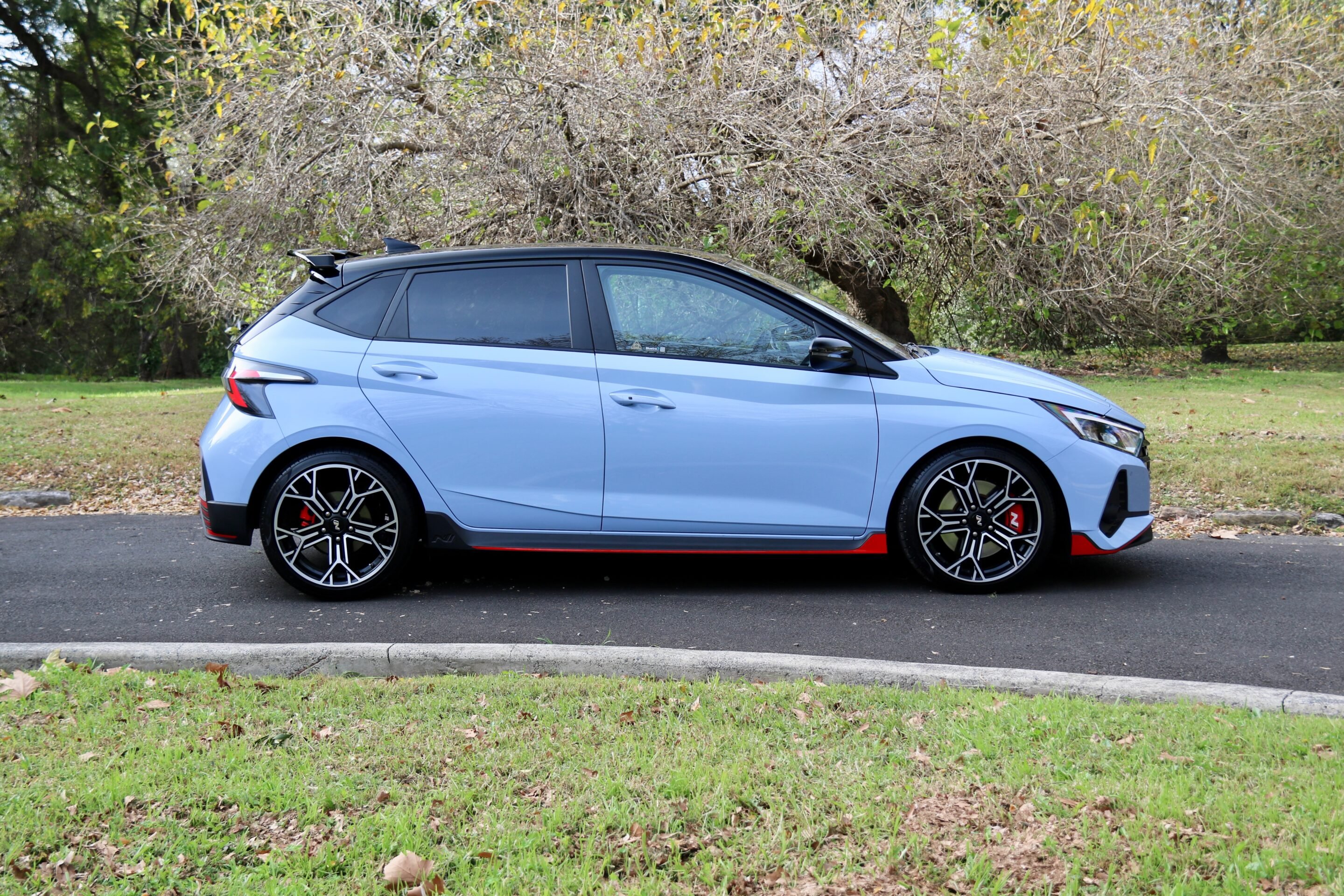
Price and equipment
There’s just one i20 N variant in Australia, which is priced from $36,500 plus on-road costs. That’s noticeably higher than when it first launched locally priced at $32,490 +ORC, though since that time it has gained some pieces of extra equipment such as the company’s Bluelink live services and a mild facelift.
Notably, with former rivals such as the Ford Fiesta ST and Renaultsport Clio no longer produced, the Volkswagen Polo GTI now priced from $41,790 +ORC and the Toyota GR Yaris another step up at over $60,000 once you drive away from the dealership, the i20 N has the sub-$40k hot hatch market to itself.
Hyundai i20 N standard features
- 18-inch alloy wheels with a space-saver spare
- Dusk-sensing automatic LED headlights
- Rain-sensing automatic wipers
- Rear privacy glass
- Keyless entry with push button start
- Heated and auto-folding mirrors
- Sports seats with cloth and leather upholstery
- Leather steering wheel, hand brake and gearknob
- Single-zone automatic climate control
- 10.25-inch digital driver’s display
- 10.25-inch touchscreen with BlueLink live services
- Satellite navigation with live traffic
- Wired Apple CarPlay and Android Auto
- Bluetooth calling and audio streaming
- Bose sound system
- Wireless phone charger
- 3x USB charging ports
- Cruise control with a speed limiter
- Selectable driving modes such as sport and N
- Active variable exhaust
- Automatic rev matching
- Launch control
- Performance driving data system
- Alarm
i20 N safety equipment
- 6x airbags
- Autonomous emergency braking (AEB) with pedestrian detection
- Lane keeping assistance with lane departure warning
- Adaptive lane guidance
- Blind-spot monitoring with rear cross-traffic alert
- Driver attention monitoring
- Traffic sign recognition
- Auto high beam
- Rear occupant alert
- Tyre pressure monitoring
- Front and rear parking sensors
- Reversing camera
The i20 N has not been tested by ANCAP and is therefore unrated for safety. However, the non-N i20 was tested by Euro NCAP and earned a four-star rating with scores of 76 per cent in adult protection, 82 per cent in child protection, 76 per cent in vulnerable road user protection and 67 per cent for safety assistance.
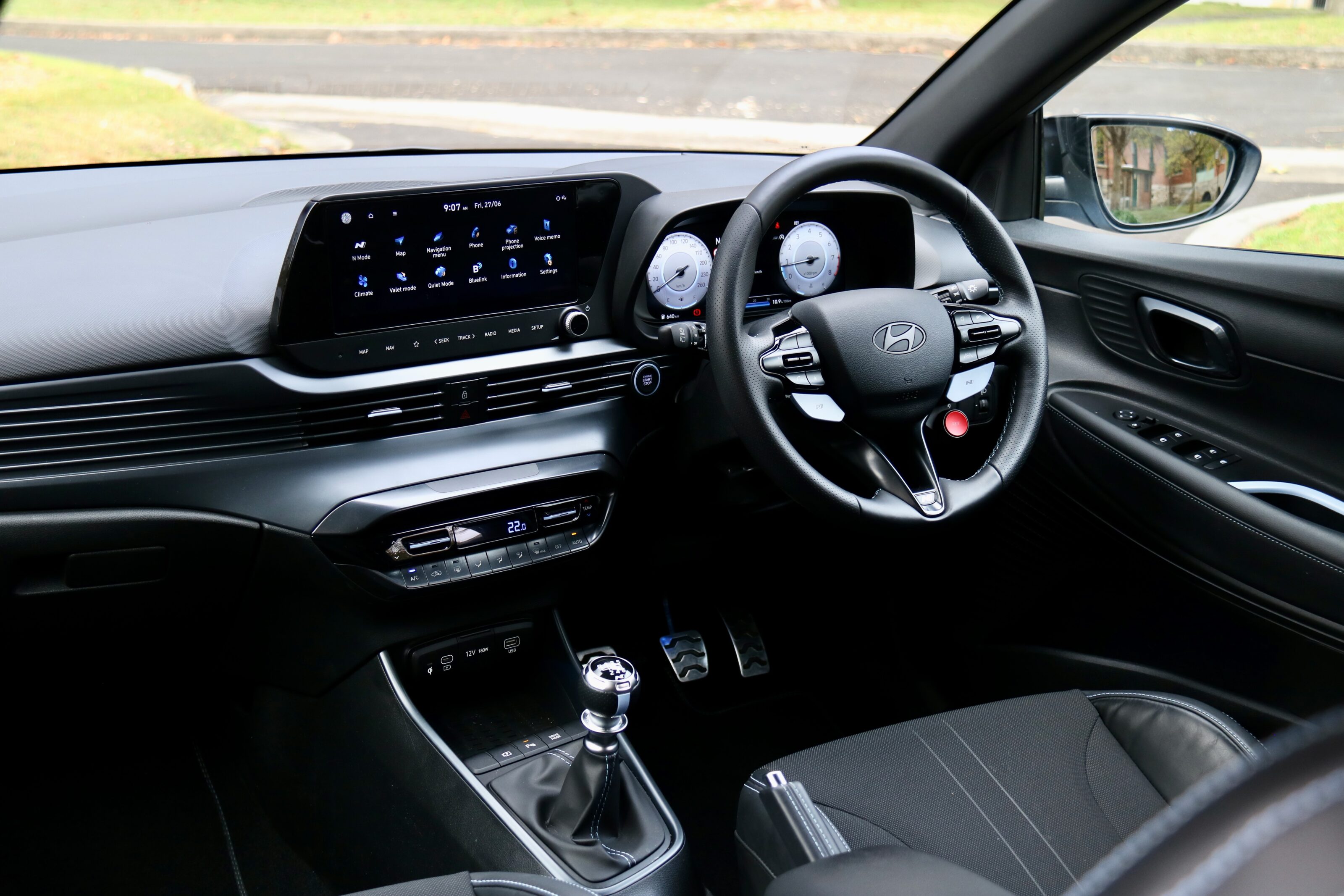
i20N options
- Premium paint: $595
- Black roof (only on certain colours): $1000
Interior, practicality and boot space
The interior of the Hyundai i20 N is filled with clues as to its performance: the light blue trim pieces on the sports seats, a meaty shifter and steering wheel, big N buttons and aluminium pedals all feature proudly, as you’d expect for a performance model. It’s also suitably dark, as urban racers tend to be, with little in the way of colour aside from the aforementioned blue touches.
Quality inside the i20 N is good, with a well screwed together feel, though little in the way of soft touch materials. Importantly, the major touch points – such as the steering wheel, gearknob and handbrake – all feel great and the driving position is excellent. Seat comfort is also impressive for bolstered sports seats, though lumbar adjustment and heating would be nice additions.
Centre of the cabin is a 10.25-inch touchscreen with features such as sat-nav with live traffic, wired – not wireless – smartphone mirroring and DAB+ digital radio. It’s an older Hyundai system but is still quite easy to use, and the graphics are crisp as well. The Bose sound system sounds good as well, with a punchy sound to suit the hot hatch feel well.
Of interest to car nerds are the seemingly endless ways to view stats about your driving in the N screen with lap times, oil temperature, throttle position and turbo pressure all featuring.
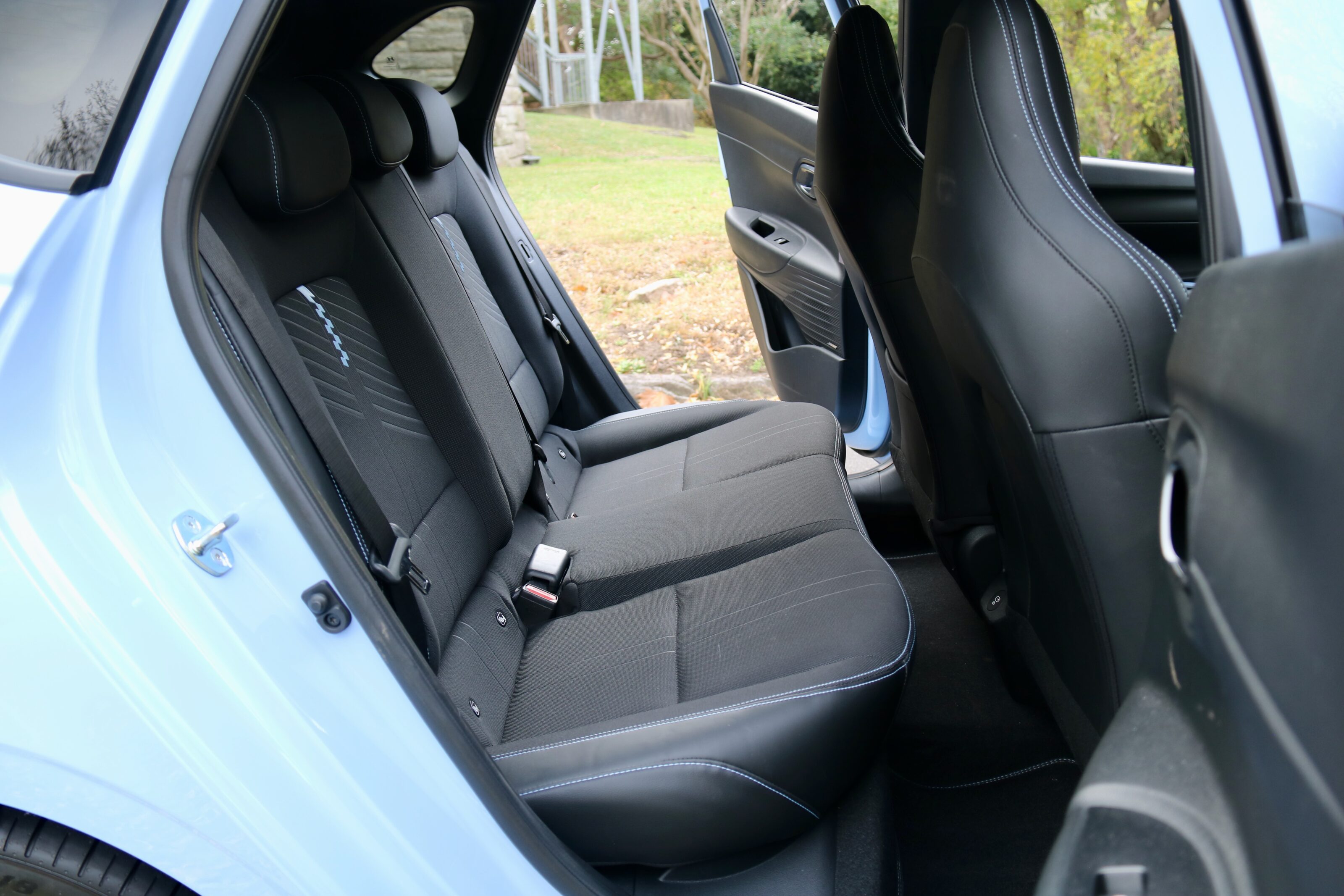
The i20 N’s cabin is somewhat practical with door bins, a medium bin underneath the sliding armrest, a tray underneath the dashboard with a wireless charger and two small cupholders in the centre console.
Move to the rear seat, and two adults will be surprisingly comfortable thanks to ample space, particularly for headroom, and a flat floor. There are a few amenities on offer such as door pockets, a map pocket, a USB-C charging port and a slot for a wallet or phone – plus two ISOFIX points and three top-tether points for child seats.
The boot of the i20 N measures 310 litres with the seats up and 1123 litres with them folded, which are good numbers for its size. Helping practicality further are a dual-level boot floor, a bottle strap, side storage, a few hooks and that the parcel shelf can be storage against the backrest. Impressively, underneath the boot floor is a space saver spare wheel.
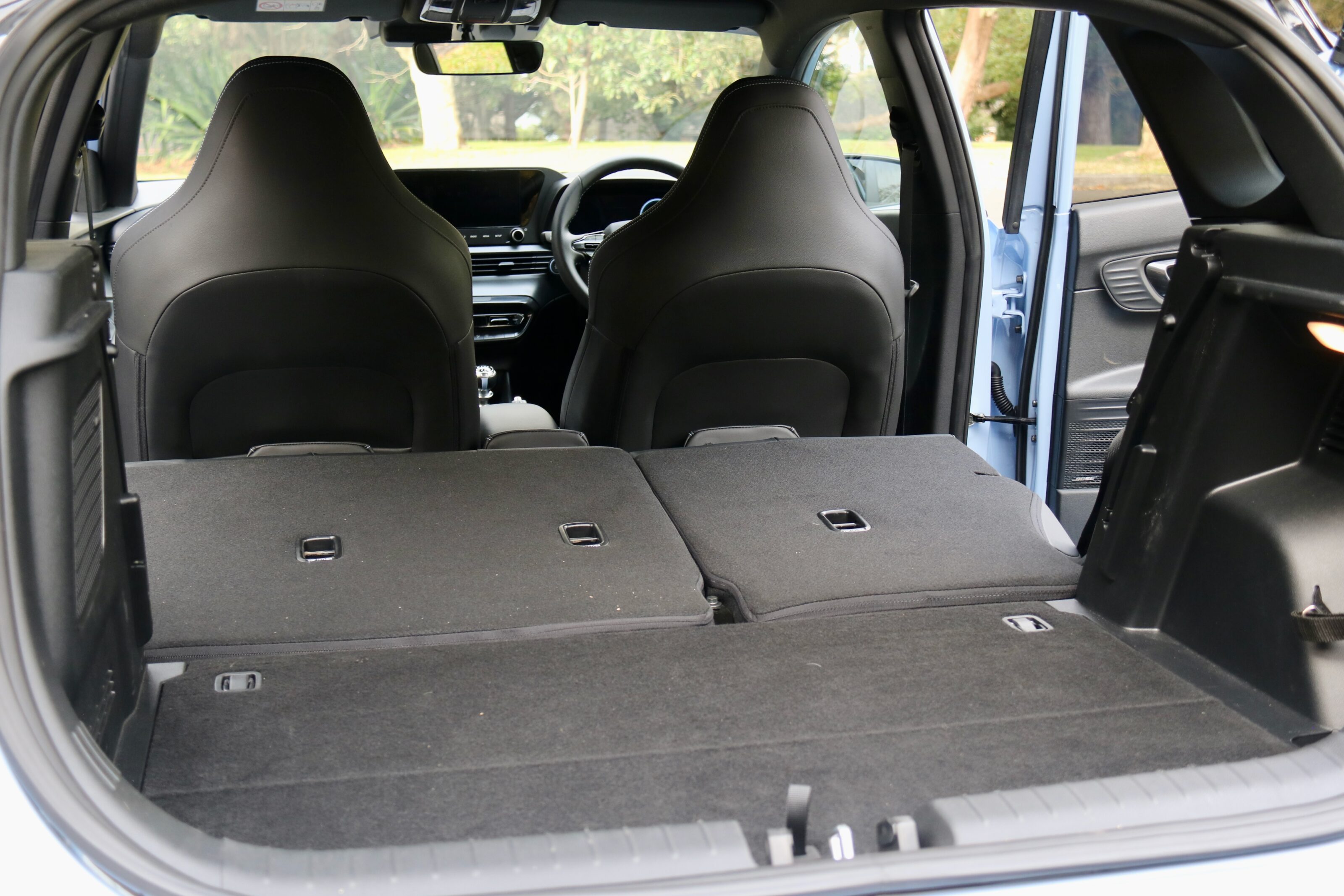
Under the bonnet
The i20 N uses a turbocharged 1.6-litre four-cylinder petrol engine making 150kW of power and 275Nm of torque (304Nm on overboost). It sends its grunt to the front wheels only through a six-speed manual transmission. It will reportedly hit 100km/h in 6.7 seconds, with a top speed of 230km/h.
Hyundai claims that the i20 N will use 6.9L/100km of fuel on a combined cycle, and we used 8.2L/100km in driving skewed towards urban. Remarkably, the i20 N can use 91RON regular unleaded fuel to fill its 40-litre fuel tank.
On the road
As you’d expect from a Hyundai N product, the i20 N shines on the road. It’s tenacious, quick and loud; all qualities we expect from a hot hatchback. Firstly, it’s quick: at a claimed 6.7 seconds to reach 100km/h, the i20 N zips, even in normal driving mode. The full 304Nm of torque on overboost hits from just 2000rpm, and by then you’re rocketing through the rev range.
As we’ve seen in the larger i30 N, the i20 N’s N modes are quite configurable with different settings for the steering, throttle and exhaust to tailor the driving experience to your tastes. In normal mode, it’s quietish but move it to sport and then N modes, and it becomes a different beast with pops and a much louder note from the exhaust.
As for handling, the i20 N is a riot and in some ways feels better than the i30 N, largely thanks to its lesser weight. The steering is appropriately meaty to tackle corners, the chassis is tight and thanks to the limited-slip differential and grippy Pirelli P Zero rubber that was developed for Hyundai’s N cars, it corners very well. Like the i30 N, lift-off oversteer is more than possible but it always feels quite planted.
The suspension is firm, it must be said, and you can really feel that around town or on bad road surfaces but on higher-speed roads such as highways, it’s actually quite comfortable. Road noise is noticeable at those speeds, however, but this is a budget car after all.
The i20 N is also well equipped for active safety features. While it does lack adaptive cruise control, it’s otherwise well catered for with auto emergency braking, lane keeping and blind-spot assistance, driver attention monitoring and traffic sign recognition – yep, the one that dings at you if it thinks you’re speeding that’s difficult to switch off.

Service and warranty
The i20 N is covered by a five-year/unlimited km warranty with 12 months of roadside assistance that’s extended by a further 12 months with each dealer service.
Its service intervals are once-yearly/every 10,000km and five years/50,000km of servicing costs a quite reasonable $1925 ($385 annually).
Verdict: Should I buy a Hyundai i20 N?
If you’re searching for a fun car under $40,000, the i20 N is one of precious few options remaining and luckily, it’s also one of the best. Sure, a GR Yaris is faster and a Polo GTI is more comfortable, but the i20 N is just so fun to drive, it’s excellent value for money, it goes well, it’s well equipped, it’s surprisingly practical and it’s got a lot of hot hatch attitude: it sees a curved road sign ahead and asks if you want N mode to tackle the corners. Need we say more?
Sure, there are downsides: it’s quite firm around town, the odd clutch action can result in a lot of stalling, its infotainment is a bit dated compared with Hyundai’s newest system, and it costs more than it used to. But it’s also a great car and we need to thank Hyundai Australia for still selling it here. Once again, if it suits your needs, go out and buy an i20 N – especially while you’re still able to.
i20 N rivals
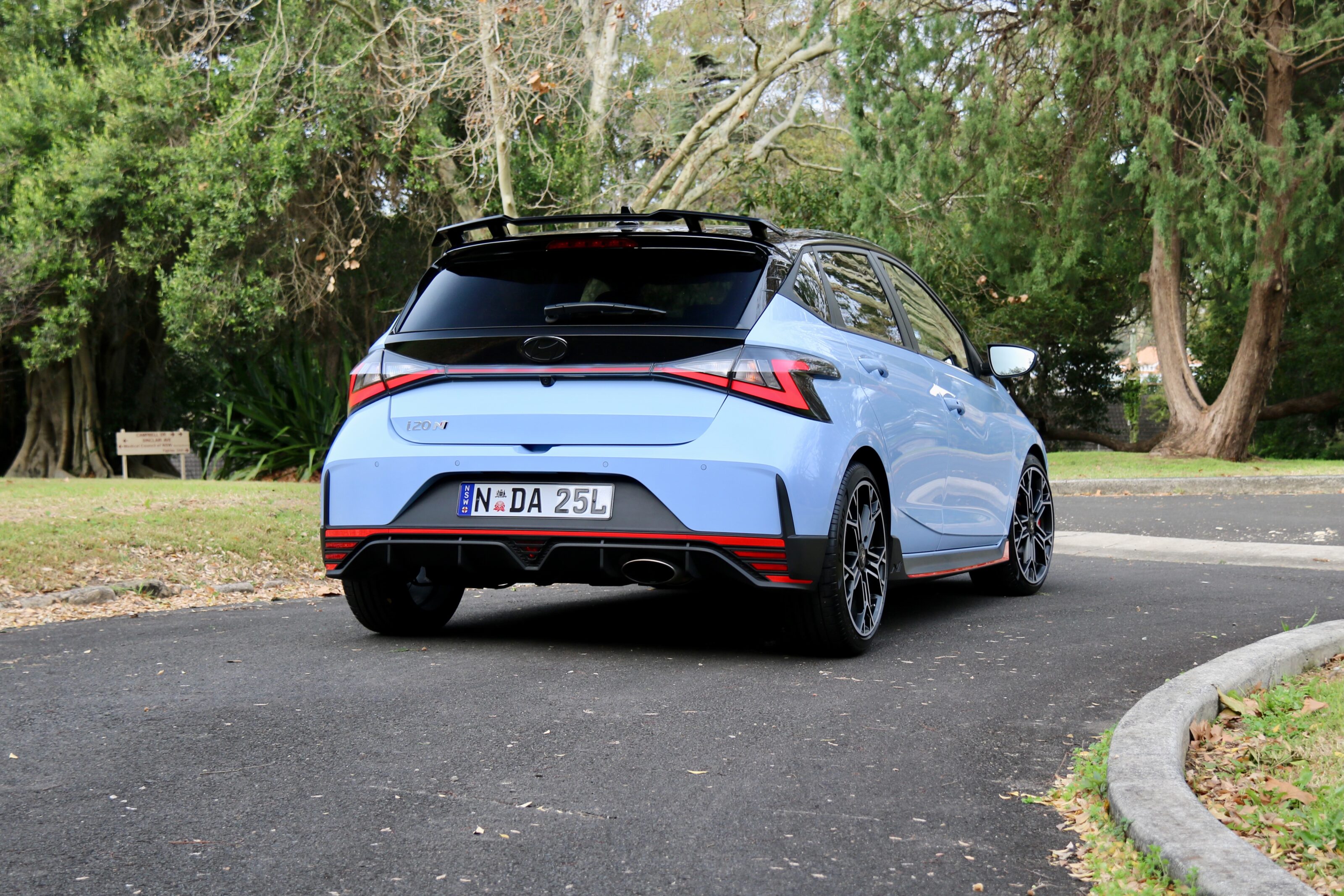
We recommend
-
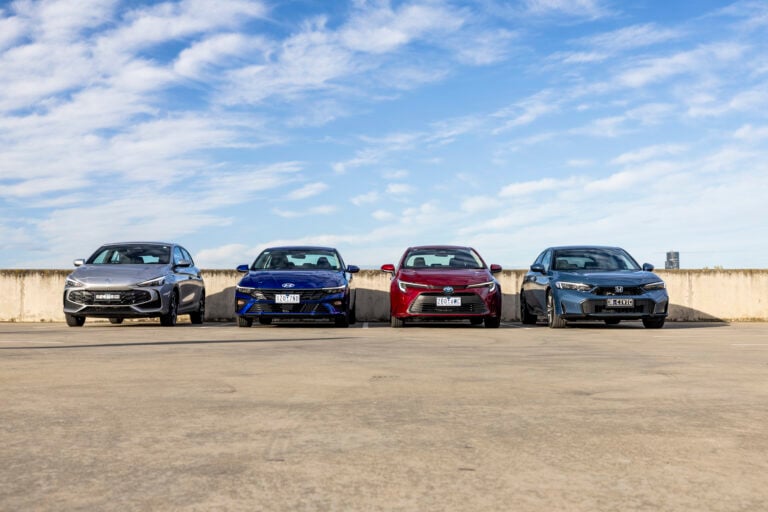 Comparisons
ComparisonsHybrid face-off: Which of four best-selling hybrid cars triumphs when put head-to-head?
The hybrid wars are heating up as Australians gently cool on electric cars. We drive four of today’s most intriguing, fuel-sipping systems – but only one leaves us besotted.
-
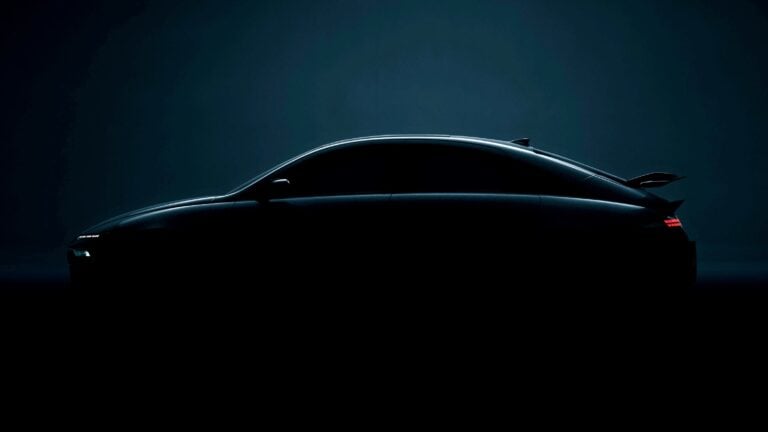 News
NewsHyundai teases next N car ahead of Goodwood reveal
The sister to the Wheels 2025 Car of the Year winner has been teased ahead of a UK reveal and confirmed to be headed for Australia.

